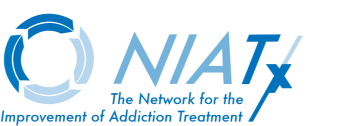 |
|
E-News Update
August 2006 |
|
|
In This Issue |
|
|||
|
|
NIATx Presentations |
||||
| |||||

Relapse rates for addictive diseases usually are in the range of 50 to 90%. Fortunately, research indicates that many of these relapses are predictable and ultimately preventable if people in recovery are provided the proper support and tools. Researchers from a new initiative called Innovations for Recovery at the University of Wisconsin–Madison are exploring how technology can improve addiction treatment outcomes. One of the areas researchers are examining is how body-monitoring instruments can be used to prevent relapse. [READ MORE]

NIATx director David Gustafson says that people involved with treatment programs tend to be receptive to change, because they work to create change in their patients' behaviors every day. "We tend to say, 'Just look at yourself and think about how you bring about change in the work you do every day. Now take those concepts and apply them to the business processes,' " he says. [READ MORE]